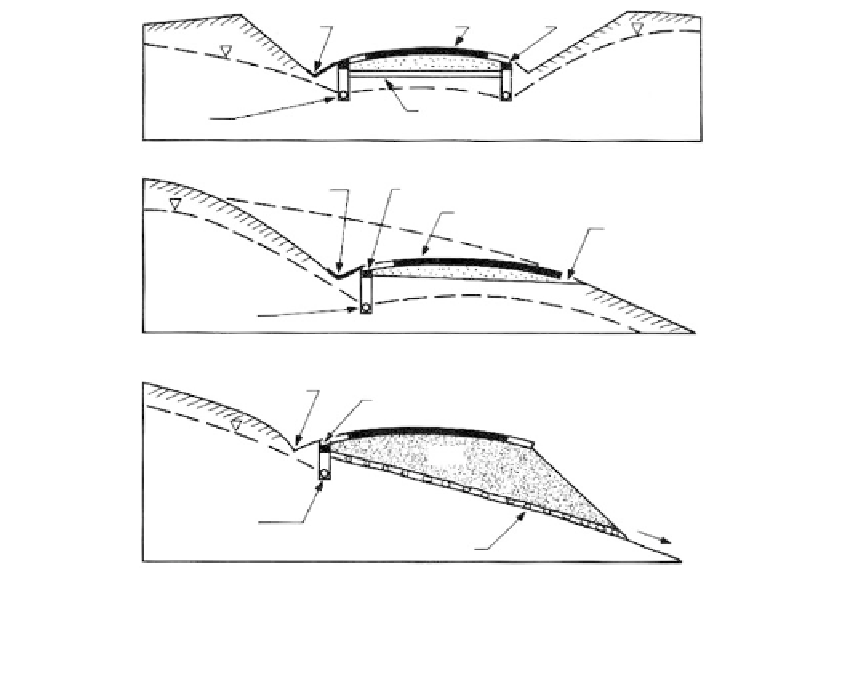Environmental Engineering Reference
In-Depth Information
Shoulder
infiltration
Surface infiltration
Subgrade
FIGURE 8.56
Sources of moisture infiltrating pavement
and subgrade.
Temperature
migration
Capillary rise
Ditch
Seal
Pavement
Longitudinal
drain
Optional blanket drain
for uplift
(a)
Ditch
Seal
Pavement
Base and
subbase
Interceptor
drain
(b)
Ditch
Seal
Fill
Interceptor
drain
Transverse drain or
drainage blanket
(c)
FIGURE 8.57
Some methods of pavement drainage control: (a) shallow cut in level ground; (b) side-hill cut; (c) side-hill fill.
grouts injected under pressures of 140 psi (10 tsf), designed to set in 15 min. This grout
tended to bind the sand grains together, increasing the shear strength. A final injection of
cement was made to compress further the mass. The final result was so satisfactory that
explosives were required to advance the excavation.
Slurry moles
are finding increasing application
in lieu
of drainage or air pressure in satu-
rated granular soils. Cutting is accomplished with a large open-head cutting wheel, which
operates behind a bentonite slurry, pumped directly to the excavation face (NCE, 1979).
Shield tunneling
is a method commonly used in soft ground, often in conjunction with
predrainage by deep wells.
Deep wells
may be used to dewater soil or rock masses along a
tunnel alignment.
Freezing
during tunnel construction has been employed occasionally
(Jones and Brown, 1978).
Pollution Control
See
Section 8.5.2.




